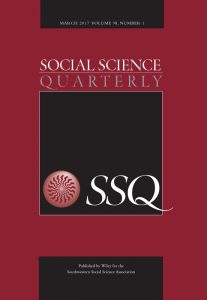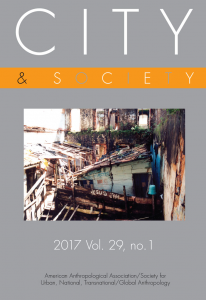Boundaries, Power, and Self Expression
 Sociologists frequently note that individuals – in effort to understand the social world – construct boundaries and make distinctions (Zerubavel, 1991). That is, in efforts to make sense of the world and its reality, individuals cut up, carve out, and make meaningful distinctions. Distinguishing one from another, that is “masculine” from “feminine”, “affluent” from “deprived”, “strong” from “weak”, and “right” from “wrong” provides an avenue for meaning and reality materialize.
Sociologists frequently note that individuals – in effort to understand the social world – construct boundaries and make distinctions (Zerubavel, 1991). That is, in efforts to make sense of the world and its reality, individuals cut up, carve out, and make meaningful distinctions. Distinguishing one from another, that is “masculine” from “feminine”, “affluent” from “deprived”, “strong” from “weak”, and “right” from “wrong” provides an avenue for meaning and reality materialize.
However, the same boundaries that construct a reality for individuals, groups, and cultures, also establish points of conflict. Consequently, the social world endures ongoing transformations as it encounters friction and opposition between sources of authority. Individuals, much like culture, “struggle over what significant symbols mean and who has the authority to project public definitions” (O’Brian, 2008). Whilst boundaries help individuals define their social environment and navigate its complex terrain, they often create areas of contested space in which contradictions and power play out.
There can be little doubt that there exists a gross inequality that limits some from actively engaging in the construction of meaning. This process is oftentimes dominated by those harboring social, cultural, economic, and political hegemony. O’Brian notes that “most persons are aware of the hegemonic position, and its legitimacy is usually taken for granted” (2008: 431). This position resides at the “center”, is considered “normal”, and is highly sought within society. Hegemonic practices, however, sustain domination and inequality as individuals carry out expected social scripts – thus, reifying current realities. This form of social organization often maintains itself through the continued use of power over those lacking both social position and authority. As a result, oppression is constructed and played out though interactions of societal groups: namely, those oppressing and those being oppressed. This relationship, often termed interactional mirrors, solidifies the hegemonic position as it is re-affirmed by both positions.
In this sense, social power and position are unavoidable features that can impress profound effects on one’s self-development. Consider O’Brian’s (2008: 441) stance:
All of us struggle to make sense of ourselves (and the world), to find ways of self-expression, and to be heard and understood. The self undergoes constant revision as it encounters friction, contradiction, and conflict among the various boundaries that give the self-meaning.
However, the ability to find self-expression is not afforded equally to all. When individuals harbor characteristics that align closely with the default or hegemonic position, then their status is considered to be normal. On the other hand, those that are distinct from the expected norm are considered to have marked, or deviant, statuses. Harboring a marked status, to be in opposition to the dominant order creates a contested boundary between how others view them and how they want to be viewed. Similarly, one that takes a “subjective” more dominant role acts upon those having an “objective” less central role. These statuses – whether governing or oppressed – influence one’s perception, interactional structures, and their self-construction.
Those occupying unmarked or hegemonic positions have a high degree of interactional freedom – referring to the argument that these positions harbor a good deal of privileged and entitlement. In addition, they are given more space to project definitions and construct identities than those of marked or marginal statuses. As a result, subsidiary populations tend to have a greater sense of social awareness. That is, stigmatized and marginal populations cannot – as hegemonic groups do – take positions for granted; rather, they are more aware of distinguishing boundaries and contradictions with the social system.
Suggested Readings:
Dean, J.J. (2011) The Cultural Construction of Heterosexual Identities. Sociology Compass 5(8): 679-687.
Nayak, A. (2007) Critical Whiteness Studies. Sociology Compass 1(2): 737-755.



1468-0491/asset/society_affiliation_image.gif?v=1&s=859caf337f44d9bf73120debe8a7ad67751a0209)
1099-1328/asset/dsa_logo.jpg?v=1&s=e4815e0ca3064f294ac2e8e6d95918f84e0888dd)
Hi! I could have sworn I’ve been to this blog before but after checking through some of the post I realized it’s new to me. Anyways, I’m definitely delighted I found it and I’ll be bookmarking and checking back often!